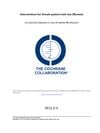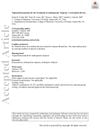4 Months 5mg daily oral minoxidil revival from the grave Is this regrowth? 11/7/2025
The user experienced significant hair regrowth using 5 mg daily oral minoxidil and ketoconazole shampoo, improving from Norwood 3 to Norwood 2. They recommend starting treatment early, noting reduced shedding and stable results.
View this post in the Community →
Similar Community Posts Join
6 / 1000+ resultscommunity Taking Charge of Your Hair: The "Big 3 Stack" Explained for 2023
The "Big 3 Stack" for hair loss treatment, which includes Minoxidil for hair density improvement, Ketoconazole shampoo for enhancing hair volume and thickness, and Finasteride for blocking hair loss causing hormones. Microneedling can boost Minoxidil's effects.
community Got a microscope camera. Here’s the difference between healthy and miniaturized hair
A user who shared progress pictures of their scalp using a microscope camera, demonstrating the difference between healthy and miniaturized hair. Various explanations for the cause of this were discussed, such as DHT build-up in scalp sebum causing an autoimmune response leading to inflammation and eventual hair loss, with some suggesting a do-it-yourself treatment involving adding ascorbic acid powder to shampoo.

community Compressed part of research of theory of androgenic/anabolitic balance. AGA h-responders analytic. Theory of physio-metabolitic method of anti AGA treatment
The treatment for androgenetic alopecia involves using finasteride and minoxidil with intense exercise and cold exposure to boost metabolism and reduce androgenic effects, potentially leading to hair regrowth. This approach may activate biological pathways for improved hair and overall health.
community 2 years. More hair. Dut, Oral Min, RU, Niz
A user's two-year hair regrowth journey using 0.5 mg Dutasteride, 5mg oral Minoxidil, 0.75ml of 8% RU58841, and Nizoral shampoo a few times a week. Other users suggest adding microneedling and topical Minoxidil for better results.
community What is everyone's stack and why?
People are using various treatments for hair loss, including dutasteride, finasteride, minoxidil (both oral and topical), RU58841, and ketoconazole shampoo. Some also use additional methods like microneedling, vitamins, and oils, with mixed results and personal preferences influencing their choices.
community What's the strongest and nuclear yet safe Hair Recovery stack?
The conversation discusses various hair recovery treatments, including finasteride, dutasteride, minoxidil, RU58841, ketoconazole shampoo, microneedling, and tretinoin. Users debate the effectiveness and safety of these treatments, with some suggesting combinations like dutasteride and minoxidil as potent options.
Related Research
6 / 1000+ results
research Comprehensive Review on Hair Loss and Restorative Techniques: Advances in Diagnostic, Artistry, and Surgical Innovation
Advancements in diagnostics, treatments, and technology have improved hair loss detection and restoration, with some types being reversible.
research Female Pattern Hair Loss: An Update
Female pattern hair loss has multiple causes and treatments, with new therapies showing promise.

research Interventions for Female Pattern Hair Loss
Minoxidil effectively treats female pattern hair loss.

research Recent Advances in Understanding of the Etiopathogenesis, Diagnosis, and Management of Hair Loss Diseases
New understanding and treatments for hair loss are improving, but more research is needed.

research Evidence-Based Guideline for the Treatment of Androgenetic Alopecia in Women and Men
Use minoxidil for hair loss; finasteride and dutasteride for men, dutasteride for women.

research Topical Ketoconazole for the Treatment of Androgenetic Alopecia: A Systematic Review
Ketoconazole may help regrow hair and increase follicle size, but more research needed.